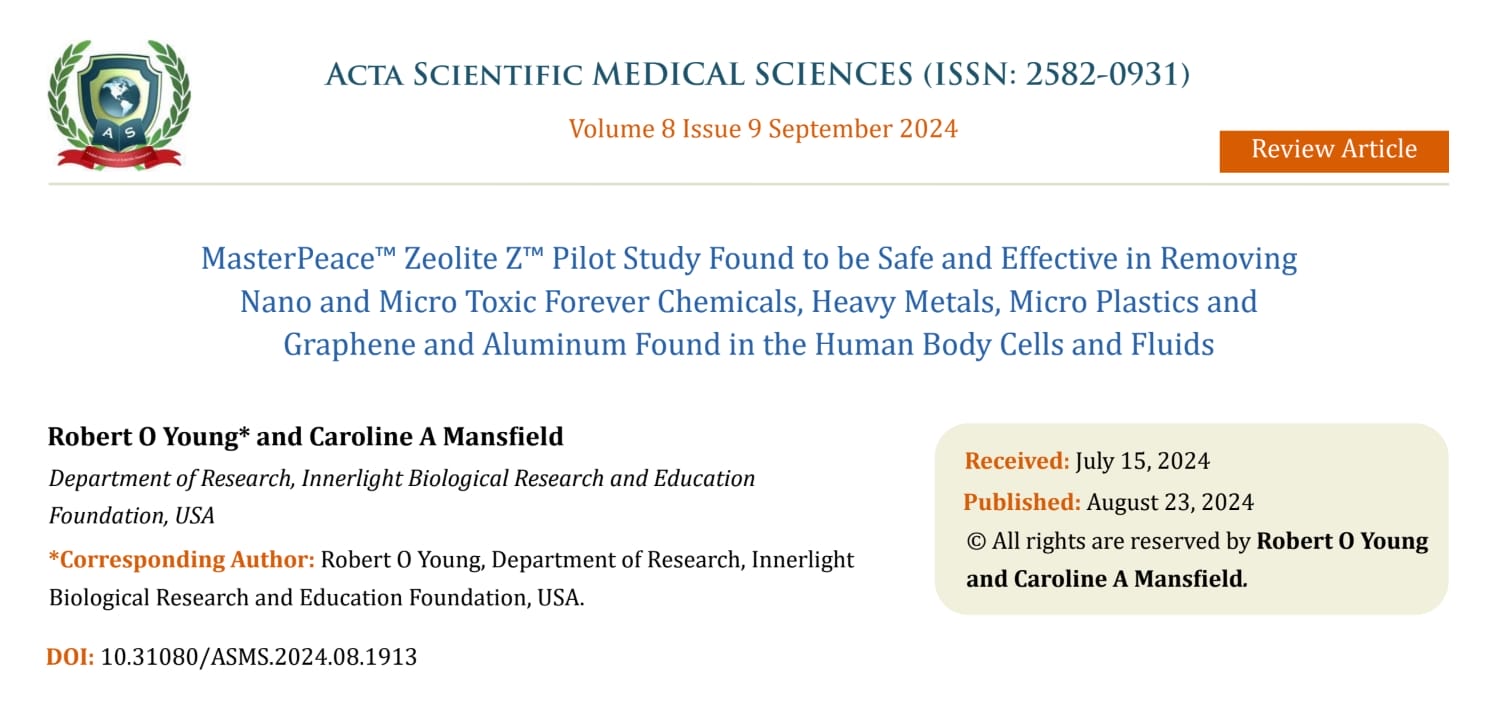The Genesis of Severe Acute Respiratory (Syndrome) or SARS & Corona Virus or COVID – 19

Robert O Young DSc, PhD, Naturopathic Practitioner Presents at the 3rd Annual Conference on Bacterial, Viral and Infectious Diseases this coming June 18th and 19th, 2020
Register Now
First Key Note Lecture:
Title
The Genesis of Severe Acute Respiratory (Syndrome) Disease or SARS (Coronavirus – COVID – 2 and COVID – 19) is Found in the Interstitial Fluids of Intestitium

Abstract
Interstitial lung disease (IFLD), or diffuse parenchymal lung disease (DPLD),[3] is a group of lung diseases affecting the Interstitium (the interstitial fluids or space around the alveoli (air sacs of the lungs).[4] It concerns alveolar epithelium, pulmonary capillary endothelium, basement membrane, and perivascular and perilymphatic tissues. It occurs when metabolic, dietary, respiratory and environmental acids injure the lung tissues that triggers an abnormal healing response. Ordinarily, the body generates just the right amount of tissue to repair acid damage, but in interstitial lung disease, the repair process goes awry because of the acidic pH (ideal healing takes place at a pH of 7.365)[5]) of the interstitial fluids that effects the normal healing of the tissue around the air sacs (alveoli) and therefore becomes scarred and thickened. Micrograph of usual interstitial pneumonia (UIP). UIP is the most common pattern of interstitial pneumonia (a type of interstitial lung disease) and usually represents pulmonary fibrosis caused by decompensated acidosis of the interstitial fluids of the largest organ of the human body – the Interstitium. H&E stain. Autopsy specimen. This makes it more difficult for oxygen to pass into the bloodstream. The term ILD is used to distinguish these diseases from obstructive airways diseases but the cause of all lung disease is due to decompensated acidosis of the interstitial fluids (pH is below 7.2) that is systemic although affecting the weakest area of the lungs. These weaknesses can be attributed to lifestyle and dietary choices There are specific types of interstitial lung disease in children. The acronym chILD is used for this group of diseases and is derived from the English name, Children’s Interstitial Lung Diseases – chILD.[6] Prolonged interstitial lung disease may result in pulmonary fibrosis, but this is not always the case. Pulmonary fibrosis is specifically caused by the increase of acids in the interstitial fluids of the lung due to an inverted way of living, eating, drinking, breathing, thinking, feeling and believing. Interstitial lung disease of the Interstitium is associated with typical findings both radiographic (basal and pleural-based fibrosis with honeycombing) and pathologic (temporally and spatially heterogeneous fibrosis, histopathologic honeycombing, and fibroblastic foci). Our findings using advanced technologies with non-invasive, non-radioactive 3D Bio-Electro Scanning of the Interstitial fluids of the largest organ of the body, the Interstitium to determine a complete chemistry, including pH. This testing has shown in all cases of interstitial fluid lung disease, including viral diseases, and malignancies with 98 percent accuracy for decompensated metabolic acidosis, of the IFLD, high levels of lactic acid and high levels of calcium. Since the interstitial fluids pass through every organ, gland and tissues we now have a complete picture of the functionality and chemistry of every organ, every gland and every tissue, including all bones and muscles.
Second Key Note Lecture
Title
What Do Viruses Like HIV & Corona Have In Common With Exosomes?

Abstract
There is only one sickness, one disease and one treatment. The one sickness and one disease is the over-acidification of the blood and then interstitial fluids due to an inverted way of living, eating, drinking, breathing, thinking, feeling and believing. There are six major contributing factors that lead to the declining acidic pH of the body fluids. As the pH of the body fluids become compensated by these six contributing factors and the body cell membranes and genetic material begin to degenerate the cells release exosomes as a defense to activate and support the lymphocytes to release oxygen species or antioxidants to reduce the acidic loads stored in the interstitial fluids of the Interstitium. The one treatment is to support the immune system with increased amounts of reduced oxygen (O-) and reduced hydrogen (H-) to restore the alkaline design of the body fluids, open up the channels of elimination in order to remove dietary, metabolic, respiratory and environmental toxic acidic waste held in the interstial fluids of the Interstitium and thus restoring health, energy and vitality to the body.
Here are the links for these two publications:
1) https://www.drrobertyoung.com/post/lies-and-viruses-have-a-lot-in-common
2) https://www.drrobertyoung.com/post/it-is-raining-acid-on-your-lungs



